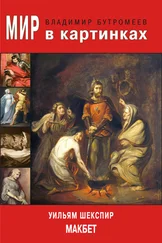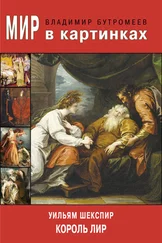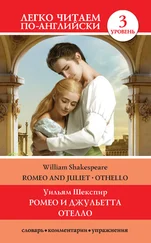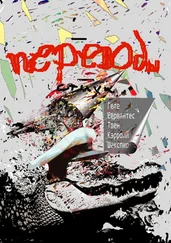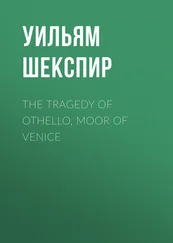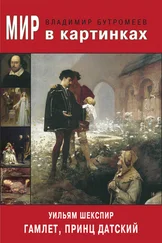Уильям Шекспир - Othello
Здесь есть возможность читать онлайн «Уильям Шекспир - Othello» — ознакомительный отрывок электронной книги совершенно бесплатно, а после прочтения отрывка купить полную версию. В некоторых случаях можно слушать аудио, скачать через торрент в формате fb2 и присутствует краткое содержание. Жанр: Старинная литература, на английском языке. Описание произведения, (предисловие) а так же отзывы посетителей доступны на портале библиотеки ЛибКат.
- Название:Othello
- Автор:
- Жанр:
- Год:неизвестен
- ISBN:нет данных
- Рейтинг книги:4 / 5. Голосов: 1
-
Избранное:Добавить в избранное
- Отзывы:
-
Ваша оценка:
- 80
- 1
- 2
- 3
- 4
- 5
Othello: краткое содержание, описание и аннотация
Предлагаем к чтению аннотацию, описание, краткое содержание или предисловие (зависит от того, что написал сам автор книги «Othello»). Если вы не нашли необходимую информацию о книге — напишите в комментариях, мы постараемся отыскать её.
Othello — читать онлайн ознакомительный отрывок
Ниже представлен текст книги, разбитый по страницам. Система сохранения места последней прочитанной страницы, позволяет с удобством читать онлайн бесплатно книгу «Othello», без необходимости каждый раз заново искать на чём Вы остановились. Поставьте закладку, и сможете в любой момент перейти на страницу, на которой закончили чтение.
Интервал:
Закладка:
PLAYHOUSESElizabethan playhouses were “thrust” or “one-room” theaters. To understand Shakespeare’s original theatrical life, we have to forget about the indoor theater of later times, with its proscenium arch and curtain that would be opened at the beginning and closed at the end of each act. In the proscenium arch theater, stage and auditorium are effectively two separate rooms: the audience looks from one world into another as if through the imaginary “fourth wall” framed by the proscenium. The picture-frame stage, together with the elaborate scenic effects and backdrops beyond it, created the illusion of a self-contained world—especially once nineteenth-century developments in the control of artificial lighting meant that the auditorium could be darkened and the spectators made to focus on the lighted stage. Shakespeare, by contrast, wrote for a bare platform stage with a standing audience gathered around it in a courtyard in full daylight. The audience members were always conscious of themselves and their fellow spectators, and they shared the same “room” as the actors. A sense of immediate presence and the creation of rapport with the audience were all-important. The actor could not afford to imagine he was in a closed world, with silent witnesses dutifully observing him from the darkness.Shakespeare’s theatrical career began at the Rose Theatre in Southwark. The stage was wide and shallow, trapezoid in shape, like a lozenge. This design had a great deal of potential for the theatrical equivalent of cinematic split-screen effects, whereby one group of characters would enter at the door at one end of the tiring-house wall at the back of the stage and another group through the door at the other end, thus creating two rival tableaux. Many of the battle-heavy and faction-filled plays that premiered at the Rose have scenes of just this sort.At the rear of the Rose stage, there were three capacious exits, each over ten feet wide. Unfortunately, the very limited excavation of a fragmentary portion of the original Globe site, in 1989, revealed nothing about the stage. The first Globe was built in 1599 with similar proportions to those of another theater, the Fortune, albeit that the former was polygonal and looked circular, whereas the latter was rectangular. The building contract for the Fortune survives and allows us to infer that the stage of the Globe was probably substantially wider than it was deep (perhaps forty-three feet wide and twenty-seven feet deep). It may well have been tapered at the front, like that of the Rose.The capacity of the Globe was said to have been enormous, perhaps in excess of three thousand. It has been conjectured that about eight hundred people may have stood in the yard, with two thousand or more in the three layers of covered galleries. The other “public” playhouses were also of large capacity, whereas the indoor Blackfriars theater that Shakespeare’s company began using in 1608—the former refectory of a monastery—had overall internal dimensions of a mere forty-six by sixty feet. It would have made for a much more intimate theatrical experience and had a much smaller capacity, probably of about six hundred people. Since they paid at least sixpence a head, the Blackfriars attracted a more select or “private” audience. The atmosphere would have been closer to that of an indoor performance before the court in the Whitehall Palace or at Richmond. That Shakespeare always wrote for indoor production at court as well as outdoor performance in the public theater should make us cautious about inferring, as some scholars have, that the opportunity provided by the intimacy of the Blackfriars led to a significant change toward a “chamber” style in his last plays—which, besides, were performed at both the Globe and the Blackfriars. After the occupation of the Blackfriars a five-act structure seems to have become more important to Shakespeare. That was because of artificial lighting: there were musical interludes between the acts, while the candles were trimmed and replaced. Again, though, something similar must have been necessary for indoor court performances throughout his career.Front of house there were the “gatherers” who collected the money from audience members: a penny to stand in the open-air yard, another penny for a place in the covered galleries, sixpence for the prominent “lord’s rooms” to the side of the stage. In the indoor “private” theaters, gallants from the audience who fancied making themselves part of the spectacle sat on stools on the edge of the stage itself. Scholars debate as to how widespread this practice was in the public theaters such as the Globe. Once the audience were in place and the money counted, the gatherers were available to be extras onstage. That is one reason why battles and crowd scenes often come later rather than early in Shakespeare’s plays. There was no formal prohibition upon performance by women, and there certainly were women among the gatherers, so it is not beyond the bounds of possibility that female crowd members were played by females.The play began at two o’clock in the afternoon and the theater had to be cleared by five. After the main show, there would be a jig—which consisted not only of dancing, but also of knockabout comedy (it is the origin of the farcical “afterpiece” in the eighteenth-century theater). So the time available for a Shakespeare play was about two and a half hours, somewhere between the “two hours’ traffic” mentioned in the prologue to Romeo and Juliet and the “three hours’ spectacle” referred to in the preface to the 1647 Folio of Beaumont and Fletcher’s plays. The prologue to a play by Thomas Middleton refers to a thousand lines as “one hour’s words,” so the likelihood is that about two and a half thousand, or a maximum of three thousand lines, made up the performed text. This is indeed the length of most of Shakespeare’s comedies, whereas many of his tragedies and histories are much longer, raising the possibility that he wrote full scripts, possibly with eventual publication in mind, in the full knowledge that the stage version would be heavily cut. The short Quarto texts published in his lifetime—they used to be called “Bad” Quartos—provide fascinating evidence as to the kind of cutting that probably took place. So, for instance, the First Quarto of Hamlet neatly merges two occasions when Hamlet is overheard, the “Fishmonger” and the “nunnery” scenes.The social composition of the audience was mixed. The poet Sir John Davies wrote of “A thousand townsmen, gentlemen and whores, / Porters and servingmen” who would “together throng” at the public playhouses. Though moralists associated female play-going with adultery and the sex trade, many perfectly respectable citizens’ wives were regular attendees. Some, no doubt, resembled the modern groupie: a story attested in two different sources has one citizen’s wife making a post-show assignation with Richard Burbage and ending up in bed with Shakespeare—supposedly eliciting from the latter the quip that William the Conqueror was before Richard III. Defenders of theater liked to say that by witnessing the comeuppance of villains on the stage, audience members would repent of their own wrongdoings, but the reality is that most people went to the theater then, as they do now, for entertainment more than moral edification. Besides, it would be foolish to suppose that audiences behaved in a homogeneous way: a pamphlet of the 1630s tells of how two men went to see Pericles and one of them laughed while the other wept. Bishop John Hall complained that people went to church for the same reasons that they went to the theater: “for company, for custom, for recreation… to feed his eyes or his ears…or perhaps for sleep.”Men-about-town and clever young lawyers went to be seen as much as to see. In the modern popular imagination, shaped not least by Shakespeare in Love and the opening sequence of Laurence Olivier’s Henry V film, the penny-paying groundlings stand in the yard hurling abuse or encouragement and hazelnuts or orange peel at the actors, while the sophisticates in the covered galleries appreciate Shakespeare’s soaring poetry. The reality was probably the other way around. A “groundling” was a kind of fish, so the nickname suggests the penny audience standing below the level of the stage and gazing in silent open-mouthed wonder at the spectacle unfolding above them. The more difficult audience members, who kept up a running commentary of clever remarks on the performance and who occasionally got into quarrels with players, were the gallants. Like Hollywood movies in modern times, Elizabethan and Jacobean plays exercised a powerful influence on the fashion and behavior of the young. John Marston mocks the lawyers who would open their lips, perhaps to court a girl, and out would “flow / Naught but pure Juliet and Romeo.”
Читать дальшеИнтервал:
Закладка:
Похожие книги на «Othello»
Представляем Вашему вниманию похожие книги на «Othello» списком для выбора. Мы отобрали схожую по названию и смыслу литературу в надежде предоставить читателям больше вариантов отыскать новые, интересные, ещё непрочитанные произведения.
Обсуждение, отзывы о книге «Othello» и просто собственные мнения читателей. Оставьте ваши комментарии, напишите, что Вы думаете о произведении, его смысле или главных героях. Укажите что конкретно понравилось, а что нет, и почему Вы так считаете.


